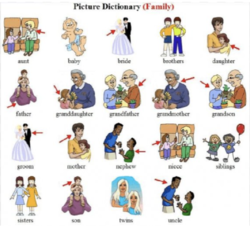Session 21, Primer Grado – Comunicación y Lenguaje Idioma Extranjero
| Guías metodológicas para el docente de Ciclo Básico/Comunicación y Lenguaje Idioma Extranjero/Primer Grado/Session 21 | |
|---|---|
| (Selecciona [Contraer] para reducir el recuadro, [Expandir] para ver contenido no mostrado). | |
| Autor | Ministerio de Educación de Guatemala |
| Área | Comunicación y Lenguaje Idioma Extranjero |
| Nivel y/o grado | Básico 1er grado |
| Competencia | 2. Answers orally to simple directions, questions and gives basic information by using specific topics framed at school and family. , 3. Reads aloud and silently: syllables, common words and phrases in English., 4. Writes words and simple phrases and sentences in the new language with the right spelling and grammar structure to be applied in daily life situations.
|
| Indicador | |
| Saber declarativo | |
| Tipo de licencia | Derechos reservados con copia libre |
| Formato | HTML; PDF |
| Responsable de curación | Editor |
| Última actualización | 2020/09/11 |
Por favor, califica el recurso solo si lo has revisado y/o o usado.
Introduction[editar | editar código]
Students will use the English language to communicate facts and feelings about their family members. Also, students will use the present continuous to communicate.
Didactic resources[editar | editar código]
- Chalk
- markers
- board
- cards.
Session 21, Period 1[editar | editar código]
Initial Phase[editar | editar código]
Ask the students to say some sentences in simple present (e.g., “I eat a mango”).
Start writing on the board. Say: “I am writing”.
Sit down and pick up a book. Say: “I am reading”.
Start walking around the classroom. Say: “I am walking”.
And so on with as many verbs as you wish, but use verbs the students already know; you may introduce new verbs, but only a few at a time.
Make sure that while you model students understand that the action is taking place right now.
Intermediate Phase[editar | editar código]
By this time students will be aware of the difference between the simple present and the present continuous, so ask them to read in their book the beginning of activity 21.1.
Explain and make sure that students understand that the present continuous describes actions happening right now while the simple present tense is used to describe habitual actions.
Wrap up[editar | editar código]
Each student will read two of their sentences. Verify that the sentences are describing actions happening right now and correct if needed.
Session 21, Period 2[editar | editar código]
Initial Phase[editar | editar código]
Ask three volunteers to go to the front, give them chalk or a marker and ask them to write each a sentence using the present continuous.
You may wish to re-write the grammatical structure for using the present continuous, see activity 21.1.
Intermediate Phase[editar | editar código]
Students will make cards for a memory game, using family member pictures like the dictionary below[1]; feel free to add more family members if you think it is appropriate. Every figure has to have two copies.
Go around making sure that the students recognize the family members presented in the cards
Wrap up[editar | editar código]
Students play memory with a set of cards. When they finish, collect all the set of cards from the groups. Next class you can switch the sets, so the groups will use a set of cards that was not made by them.
Session 21, Period 3[editar | editar código]
Initial Phase[editar | editar código]
Play “Memory Fun” using the instructions found in the student's workbook.
Verify that students are following the instructions in order to play the game.
Intermediate Phase[editar | editar código]
Students will gather in the same groups as in Period 2 and will start playing.
Walk around verifying that the groups are producing English based on the game. Do not allow Spanish to be spoken for the game.
Wrap up[editar | editar código]
Students will reflect on the Can Do Statements on the student workbook.
Notes[editar | editar código]
Sistema social para expresar ideas y manifestarlas al prójimo. Este sistema existe dentro de un entorno social (sistema social) y un sistema lingüístico (ejemplos son el español, francés, k’iche’, kaqchikel, etc.) Tienen que existir ambos sistemas para que pueda existir la comunicación.

